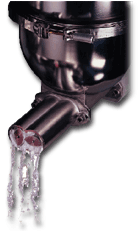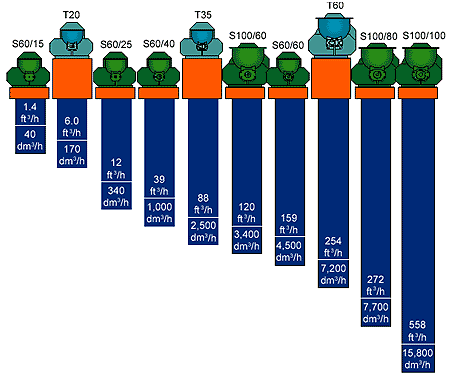|
 Every Feeder Starts as a Volumetric Feeder Every Feeder Starts as a Volumetric Feeder
In principle, volumetric feeding is the simplest, most economical feeding solution available. Bulk material is held in a hopper and constantly fed into a process per unit of time. A gravimetric feed rate may be inferred through a calibration process where a timed sample is taken and weighed, and screw speed adjusted accordingly. Although there is no weight feedback to assure feeding accuracy over time, this may not be a concern for materials with consistent bulk density.
Choosing the Best Volumetric Feeder for Your Process
K-Tron offers a wide variety of single and twin screw volumetric feeders. With exchangeable screw design choices, you can handle a wide range of applications involving prefeeding, feeding or batching of materials with consistent density, particle size and moisture content.
Single Screw Feeders
handle free-flowing materials such as pellets and powders.
Twin Screw Feeders handle more difficult materials such as pigments, sticky, bridging or flooding powders, fibers and fiberglass.
 Feed Rates to Meet a Wide Range of Applications Feed Rates to Meet a Wide Range of Applications
Application Examples Include:
- Ti O2
- Pigments
- Seasoning on potato chips
- Pellets for plastic extrusion
- Flocculating agents for wastewater
- Oxides for mill charging
- Vitamins in candy manufacture
- Salt in cheese production
- Additives for ice cream or baked goods

Feed Screw Designs to Handle a Diverse Range of Bulk Materials
Exchangeable Feed Screws in Single and Twin Screw Feeders
The table below provides a rough classification of bulk material characteristics suitable to certain types of screw designs. Where flow characteristics are unkown or inconsistent, feeding tests are recommended.
Go to the Feed Rates chart to see how screw feeders meet a wide range of applications. Screw feeders are available in Volumetric, Compact, Loss-in-Weight and K2G Weighblender models.
|

